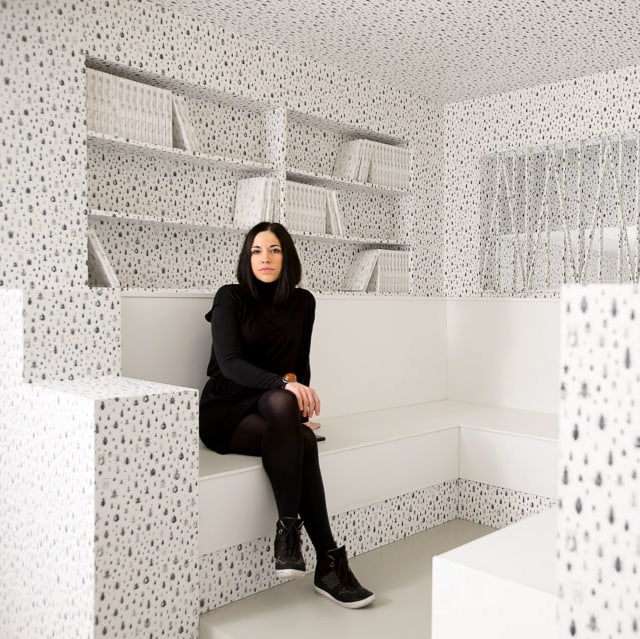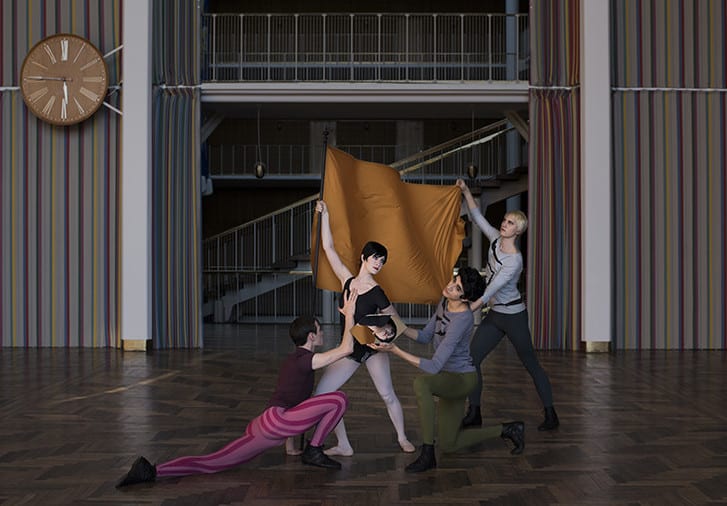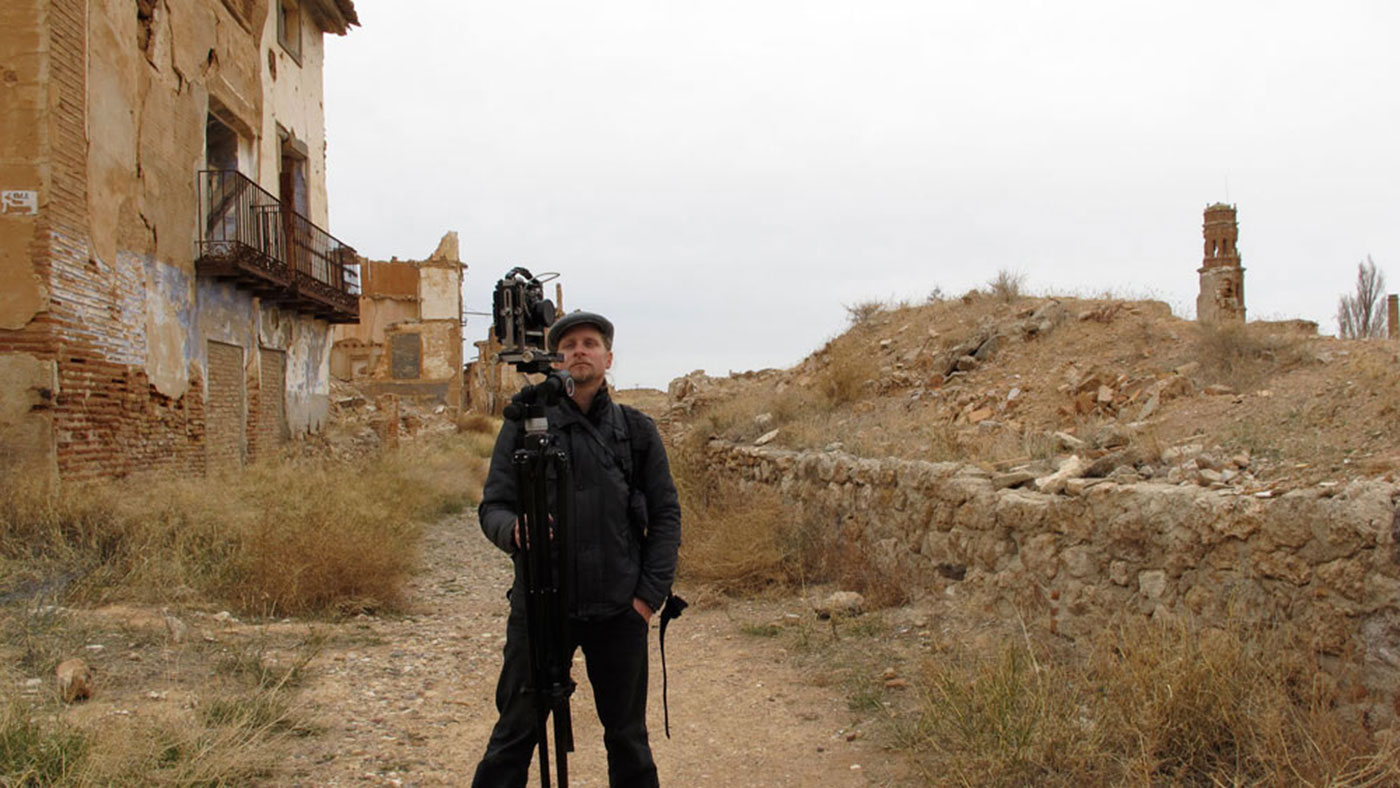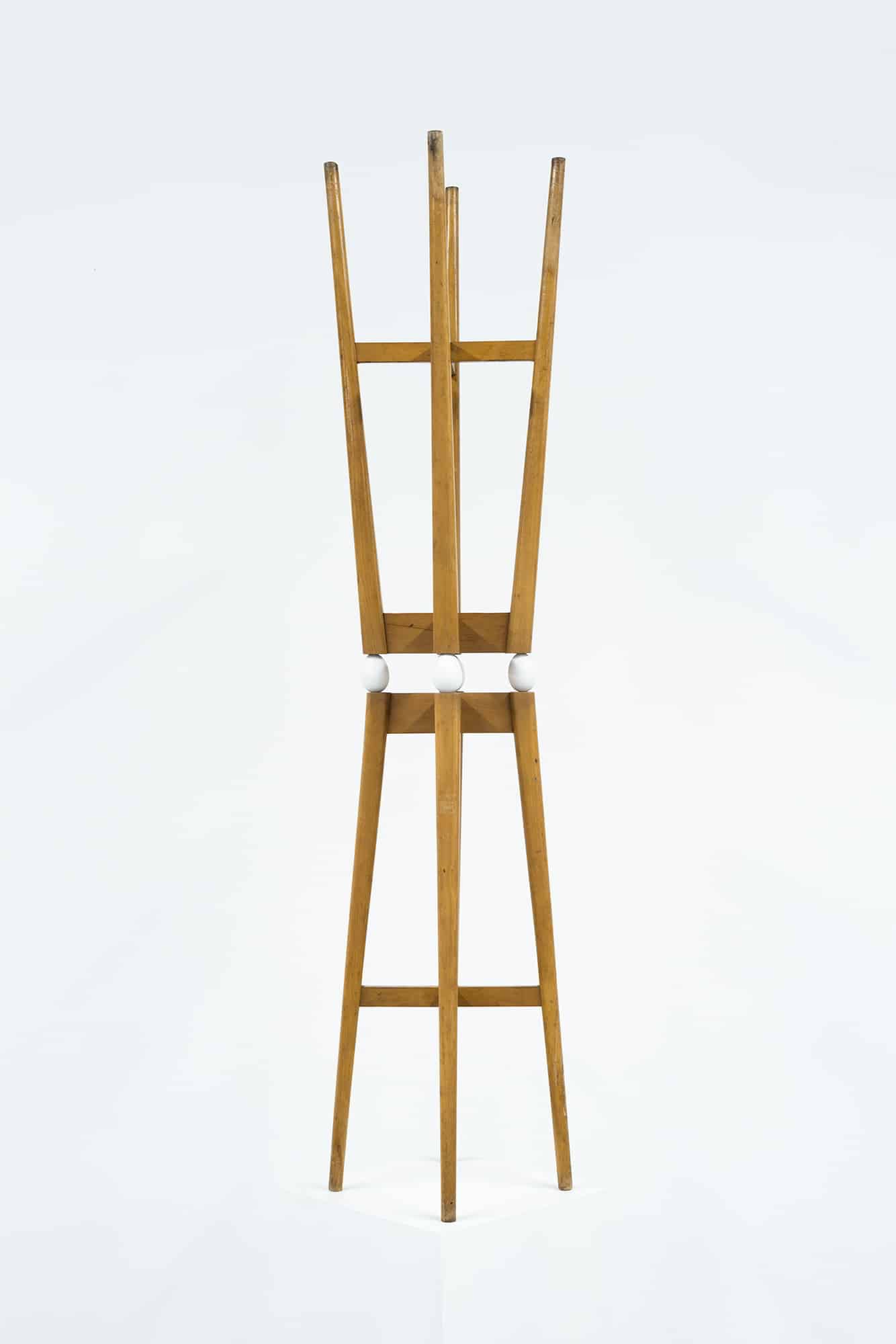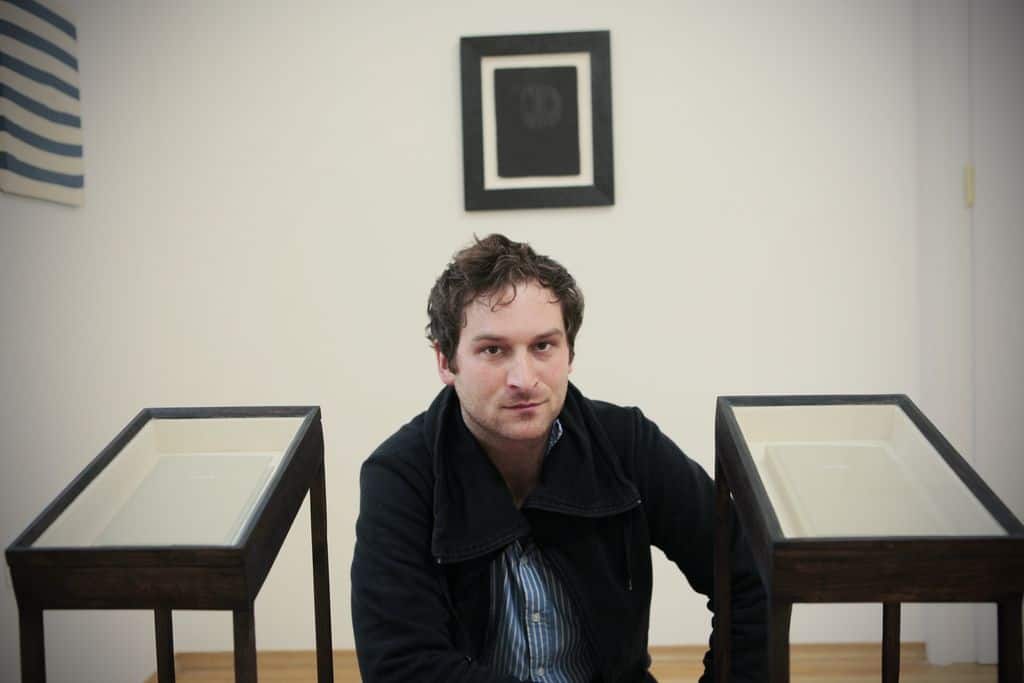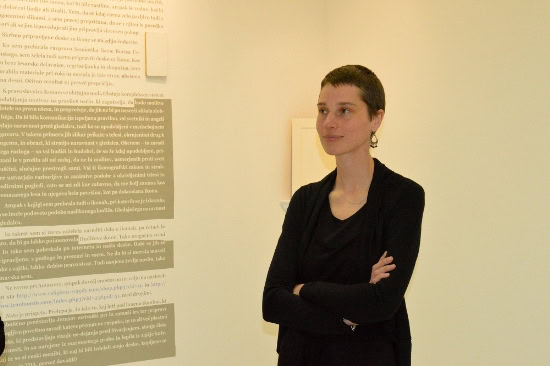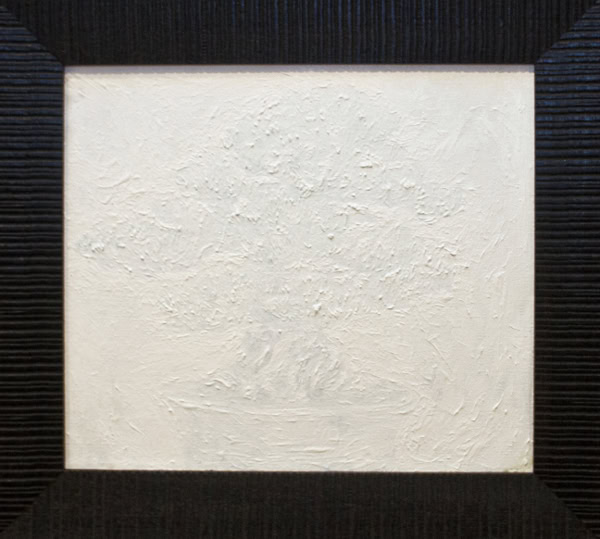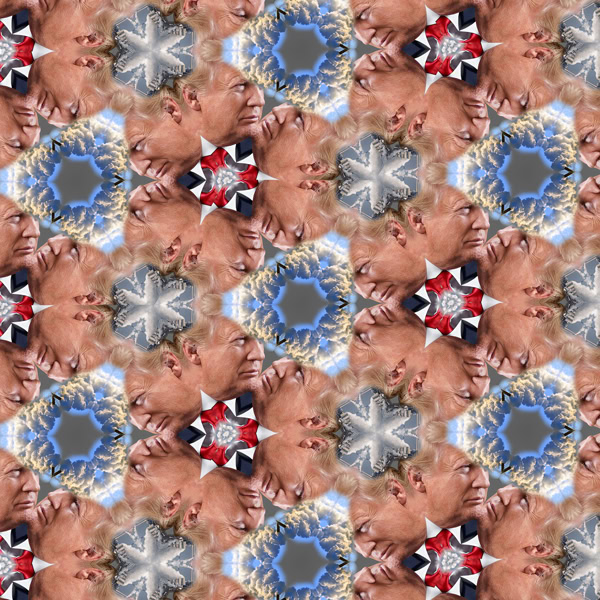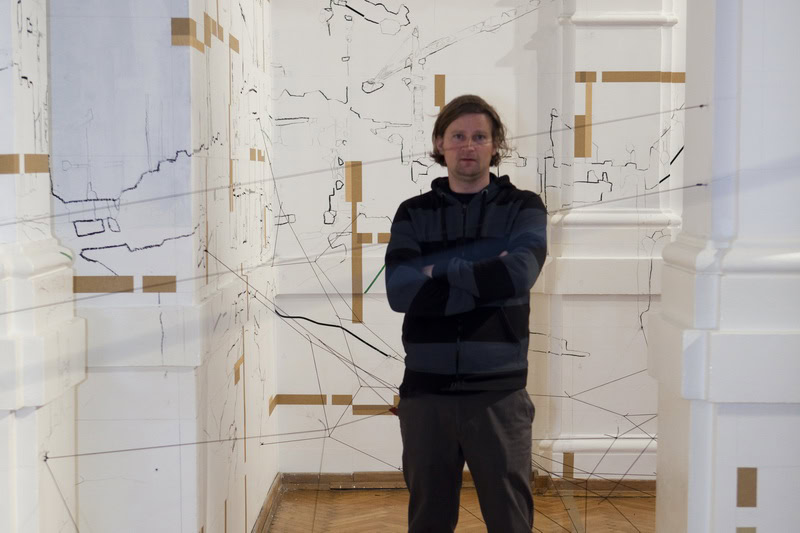Slovenia undeniably had gone through the difficult struggle of fighting for freedom. But had it gone through it to the very end? Jasmina Cibic, Primož Bizjak, Ištvan Išt Huzjan, Nina Slejko as well as Miha Strukelj (using the interdisciplinary analysis and hypermedia), prove in their works that the struggle for freedom of Slovenian art is still going on.
Jasmina Cibic
Jasmina Cibic’s art is based on the correlation between the old and new media. Using multimedia, the artist combines it with traditional forms of art, demonstrating the variability of the art form. Through the prism of national identity, Jasmina looks for an answer to a question related to the contradictions in art, and this way, she emphasizes the problems art struggles with in Slovenia.
Cibic’s works, filled with an ironic take on the archaic nature of the national representations, were exhibited in the Cooper Gallery in Dundee; Künstlerhaus Graz in Graz; ADN Galería in Barcelona; Belvedere 21 in Vienna; Kulturni Center Tobačna 001 and the Museum of Contemporary Art Metelkova, both located in Ljubljana.
Jasmina Cibic
Jasmina Cibic – Nada Act II, 2017
Jasmina Cibic – 20th Century, Museum of Modern Art, Ljubljana, 2010
Primož Bizjak
Primož Bizjak’s photographs are characterized by realism: using analog cameras, the photographer concentrates on every detail and reveals its mystery. The artist doesn’t change his photographs digitally, thus showing the object of his art as it is. Bizjak is interested in truth, history and symbolism, which we don’t notice in our everyday lives, and only in front of his camera do the objects show their true nature.
Primož Bizjak’s works were exhibited in the Gregor Podnar Gallery in Berlin; Tasman Projects in Madrid and the Museum of Contemporary Art Metelkova in Ljubljana. Also, the Slovenian photographer participated in the 54th Venice Biennale and at Isola Mondo, a collateral event of the 53rd Venice Biennale.
Primož Bizjak
Primož Bizjak – Tre Fiumi, 2015
Primož Bizjak – Passo della focolaccia, 2017
Ištvan Išt Huzjan
Twice nominated for the OHO Award in Slovenia in 2011 and 2014, and awarded the Fernand Baudin Prijs in Belgium in 2013, Ištvan Išt Huzjan in his work explores the nature of the unconscious. Moving from the avant-garde to neo-avant-garde, the artist balances between materialism and non-materialism, simplicity and symbolism. In his performances and sculptures, Ištvan raises questions regarding the themes of relationships, history and everyday life.
In 2013 Ištvan opened an exhibition space in Brussels called Coffre Fort, together with Gregoire Motte and Thibaut Espiau. In 2010 the artist became a co-founder of the artist collective Project Goleb in Amsterdam. The Ricou Gallery in Brussels, ŠKUC Gallery in Ljubljana, Osage Gallery in Hong Kong and others exhibited Ištvan Išt Huzjan’s works. It’s worth mentioning that from 10 October 2019 till 12 January 2020 the artist’s works can be seen at the 9th Triennial of Contemporary Art U3 in the Museum of Contemporary Art Metelkova, Ljubljana.
Ištvan Išt Huzjan – Unnamed Figure, 2015, Courtesy of the artist and PROYECTOSMONCLOVA
Ištvan Išt Huzjan
Ištvan Išt Huzjan
Nina Slejko
Nina Slejko explores the problems of intimacy and sensuality, interpreted as a complex of interconnections of the history, politics and ideology of art. Realising that the personal is always connected with the public, the artist demonstrates in her work the influence of the bourgeois view on art. The artist is trying to find the answer to the question: what is artistic beauty, and beauty in general, as a phenomenon?
Nina’s work, which touches on extremely important themes in the art world, could have been seen in the Maribor Art Gallery in Maribor; Equrna gallery in Ljubljana; Gallery Rostrum in Malmö; Galerija Domžale in Domžale and others.
Nina Slejko
Nina Slejko – Bonsai, 2012
Nina Slejko – Trump, 2017
Miha Strukelj
Miha Strukejl, processing the photographs portraying Chernobyl and the bombing scenes in Afghanistan and Belgrade, is a vivid example of an artist focusing on post-memory. He is interested in the nature of transferring the media objects to canvas, provided that the characteristics of the original are preserved. In recent years, the artist has been combining the themes of the metropolis and the personal, using a translucent base, thus concentrating on the object of the image.
Miha Strukelj’s works were featured in several exhibitions at key galleries and museums, including Kulturni Center Tobačna 001 in Ljubljana; Galerie Ernst Hilger in Vienna; the Gow Langsford Gallery in Auckland and VOLTA NY in New York.
Miha Strukelj, Talbot Street, 2008
Miha Strukelj
Miha Strukelj – LEGO_ME, 2007




